Coal-Fired Power Plant Heat Rate Improvement Options, Part 1
Even without regulatory considerations, there are good reasons for virtually every coal-fired power plant to improve its heat rate. The Electric Power Research Institute (EPRI) has looked at dozens of methods for improving heat rates and evaluated their applicability and costs. Part 1 of this two-part series explains the basics of heat rate improvements and the range of possible options explored in recent EPRI reports.
The heat rate of a coal-fired power plant represents the amount of heat, typically in Btus, needed to generate 1 kilowatt-hour (kWh) of electricity. Accordingly, typical units for heat rate are Btu/kWh.
Heat rate is the heat energy input per unit of electrical energy output, or fuel consumption rate for specific levels of power plant output. Heat rate is also the inverse of plant efficiency. In this sense, it is comparable to a golf score: Lower is better.
For a given power plant, heat rate depends on the plant’s design, its operating conditions, and its level of electric power output. In theory, 3,412 Btu of thermal energy is equivalent to 1 kWh of electric energy. For existing coal-fired power plants, heat rates are typically in the range of 9,000 Btu/kWh to 11,000 Btu/kWh. A plant with the U.S. industry average heat rate of 10,300 Btu/kWh is operating with an overall plant efficiency of about 33% (3,412/0.33 = 10,339).
All heat rates discussed in this article and referenced EPRI reports have been determined based on net generation. Plant net generation accounts for the auxiliary power consumption required to operate the machinery in the plant. Using net station or unit output as the denominator helps maintain a holistic view of plant performance and permits inclusion of the effect of all modifications, including emissions controls that change auxiliary power consumption. Net heat rate permits better comparisons of units using steam-driven components to those using electrical motors, as the steam used to drive large components is typically less expensive than electricity, but it robs the steam turbine of some capacity.
Benefits of Lowering Heat Rate
The heat content of coal is in the range of 8,000 Btu/lb to 12,000 Btu/lb. Coal costs $1.5/MMBtu to $2/MMBtu, or about $30/ton. A typical coal plant consumes 6,000 tons per day. For a coal-fired plant, fuel is by far the largest expense item, representing about 55% to 75% of total plant expenses. Reducing a power plant’s heat rate can significantly lower fuel consumption and thus lower its costs as well, directly benefitting power producers and their customers (Figure 1). For example, at a typical 500-MW plant operating at 80% capacity factor and firing $2.00/MMBtu bituminous coal, a 1% heat rate reduction will save about $700,000 in annual fuel costs (500,000 kW x 10,200 Btu/kW/hr x 365 days/yr x 24 hr/day x 80% x 1% x $2/MMBtu = ~$700,000).
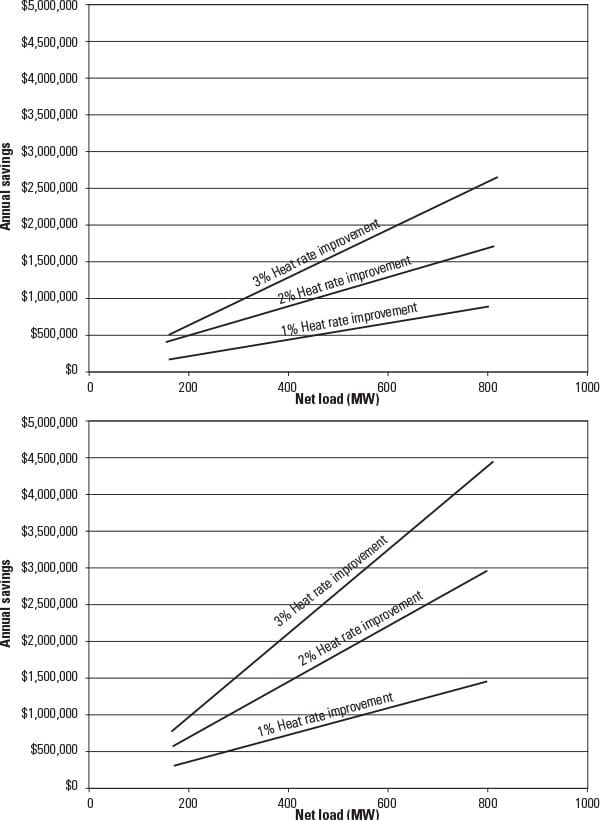 |
| 1. Big savings. Improving a plant’s heat rate has the most direct effect on its bottom line. The top chart shows savings at $1.50/MMBu; the bottom chart shows savings at $2.50/MMBtu. Courtesy: EPRI |
Heat rate improvement is also the first obvious step to reduce carbon dioxide (CO2) and all other emissions. It is commercially proven and is the most cost-effective and immediately available control process for lowering CO2. The 1% heat rate reduction described above also corresponds to a 1% reduction in CO2 emissions—about 40,000 tons/year—something that could amount to significant savings if new regulations permit trading of CO2 credits or impose a “fee” on CO2 emissions.
Even assuming the eventual implementation of carbon capture and storage technologies, optimizing heat rate will still make sense as a first line of CO2 reduction and could be a complementary activity with other control options. Heat rate reductions will also result in decreases in other emissions, such as nitrogen oxides (NOx), sulfur dioxide (SO2), particulates, and mercury, which can help plants meet other compliance requirements. Even for a constant emission rate in pounds per million Btu, an improvement in heat rate will result in fewer Btus fired, and thus fewer total pounds of a given pollutant produced. In some cases, the benefit of emissions reduction may exceed the value of fuel savings.
Historical Heat Rates
Unfortunately, since the mid-1960s, the average heat rate of fossil-fueled electric power plants in the United States has gradually increased. Several factors have contributed to this slow degradation in unit performance. One early reason was the introduction of nuclear generating units to provide an increasing share of baseload generation and the anticipation of a large expanding nuclear construction program over the next several decades. With these low-cost generating units forecast to provide a large fraction of the baseload capacity, utilities devoted less attention to the maintenance and upkeep of their older fossil stations in anticipation of their retirement in the 1970s or 1980s.
This trend was exacerbated as nuclear construction costs escalated, reducing the funds available for maintaining fossil station performance, as well as diverting the attention of utility upper management from the operation of these stations. For those utilities that brought nuclear units online, many of the fossil plants that formerly constituted their system’s baseload capacity were changed to cycling duty. The thermal inefficiencies associated with startups, shutdowns, and swings in load, as well as extended periods of operation at less than full power, resulted in increased heat rates for these units. Generating units are designed and built to achieve their best heat rates when operated in steady state at full load.
In addition, environmental regulations forced many utilities to retrofit energy-consuming pollution control equipment such as flue gas desulfurization (FGD) systems. The key deleterious effects caused by the addition of emission controls were the increase in auxiliary power consumption and the decrease in boiler efficiency. This adverse trend started many decades ago with the required addition of electrostatic precipitators (ESPs) to remove particulate matter from the flue gas prior to exhausting it out the stack. Those new ESPs created a pressure drop, forcing the fans to work harder and increased the consumption of auxiliary power.
At the same time, in some areas, decreasing coal quality and the use of higher-moisture-containing fuels such as Powder River Basin coal contributed to a reduction in unit performance. A 2010 EPRI report, Evaluation of Fuel Quality Impacts on Heat Rate (EPRI document 1019703), has more on the effects of fuel quality on heat rate. Most recently, the proliferation of renewable and natural gas generation, along with economic factors, has resulted in a need for more flexible operations (for example, more frequent cycling and lower turndown) of the existing coal-fired fleet, which has a substantial negative effect on plant heat rate.
The problem of improving fossil plant heat rates in the 1980s was made more difficult by the penalties associated with retrofitting emissions control equipment, declining coal quality, and normal degradation associated with aging of the units. This latter concern continues today, as more units are operated beyond their expected operating lifetimes, with additional emission controls and increased generation flexibility required.
The hurdles to improving performance were further raised when many site performance engineers were lost either to retirements or shrinking personnel levels in the wake of the deregulation movement of the 1990s.
Considering all these elements working against heat rate improvements in the electric generation industry, it should not be surprising that current industry estimates suggest several percent of efficiency have been lost at many existing coal-fired power plants. However, a portion of that loss is potentially recoverable if the correct processes, procedures, and resources can be applied and maintained.
The biggest hurdles are typically not technical, they’re financial. Limited budgets, concerns about triggering New Source Reviews, and the ability to pass along fuel costs through adjustment clauses have been the biggest impediments to heat rate improvements.
Assessing the Range and Applicability of Heat Rate Improvements
Coal-fired power plants were initially designed and built to achieve unit-specific heat rates. The typical coal-fired plant is now about 30 to 40 years old and the operating heat rates may be significantly different than initial design values. Power plant owners and operators are unsure of the range of possible heat rate improvements for their existing fleets.
In recent years, several EPRI projects have explored different aspects of heat rate improvements. A recent EPRI report, Range and Applicability of Heat Rate Improvements (3002003457), summarizes the findings of those projects to provide information on the range and applicability of heat rate improvements. This two-part series of articles is based on that report.
Utilities have limited budgets and want to know how much they can recoup or improve by implementing actions and/or new technologies. Because EPRI is looking at heat rate from a holistic viewpoint, we were able to evaluate projects at a plant level instead of at a component level and have compiled an extensive list of possible options.
Heat Rate Improvement—Capital and Maintenance Projects
In 2008–2009, EPRI developed a methodology to assess the costs and benefits of potential maintenance improvements to coal-fired power plants and refined the methodology to assess the net annual benefit of potential capital improvements to these plants. The assessment methodologies were then applied to a hypothetical 500-MW plant to calculate the potential benefits, including the heat rate reduction, reduction in auxiliary load, capacity increase, equivalent forced outage rate (EFOR) improvement, and emissions reductions.
The calculations were captured in two spreadsheets—one for capital projects and the other for maintenance projects. Inputs could be modified according to plant-specific circumstances, thus making it possible for individual utilities to use the methodology for scoping studies. The magnitude of the actual heat rate improvements are site-specific, as are the drivers and economic benefits.
The methodologies and the calculations were described in a 2009 EPRI report, Capital and Maintenance Projects for Efficiency Improvements (1019002).
Although the specific data presented in this report were conceptual in nature, this screening guide for capital and maintenance projects was developed based on experience with actual projects. The information did not represent any actual plant or facility but was intended to be representative. The projects depicted represented those that improved plant efficiency and appeared to be economically justified. The list of potential power plant capital improvements and maintenance-related projects assessed in this report was not exhaustive, and not all of the improvements will result in a net positive annualized benefit for every situation.
The information provided in this article is intended for use as a screening tool to compare the potential for different capital and major maintenance projects that may prove to be beneficial to a specific generating unit. The methodology is not intended as a rigorous project analysis. The values provided are reasonable order-of-magnitude estimates, but they reflect circumstances that are hypothetical and do not represent any specific plant. Values for a specific facility may be different. A project that appears to deliver value in this analysis may, in fact, be marginal or not cost-justified under different real-world circumstances. The opposite may also be true.
The following sections describe the approach used by the assessment methodologies and provide an overview of the capital and maintenance projects.
Methodologies
The assessment methodologies followed a six-step approach that divides the effort into logical steps designed to ensure a reasonably comprehensive and technically accurate analysis:
Identify Major Systems in a Typical Plant. The purpose of this task is to ensure that all applicable plant systems were considered. The classification focuses on major systems and does not address every nuance of plant design.
Identify Typical or Potential Projects for Each System. For each of the systems noted above, a number of different options were identified for capital and maintenance projects that could conceivably improve performance if implemented. This initial list was based on industry experience with similar efforts and knowledge of the respective systems.
Obtain Input Data and Values. A significant number of assumptions are necessary to effectively characterize the options and economics for a given plant. To make this reference useful to most power plant operators and other companies, those specific required metrics, configurations, and other inputs were identified and used to populate example calculations.
Characterize Typical or Potential Projects for Each System. For each of the systems identified in Task 1, the guide includes a list of capital and maintenance projects that could, in theory, be economically attractive efficiency improvements. This list was selected based on potential applicability and does not address all the issues that affect the feasibility of a specific project at an actual plant, especially with respect to economics and plant configuration.
Summarize Uncertainty and Potential Findings. Even with the screening used to characterize the potential project list, uncertainty will remain for a number of issues for any project. For this reason, the resultant list of projects has been further characterized with a brief discussion of those issues that could significantly affect the value of the project but are beyond the scope of this screening activity.
Conduct a Reasonability Check of Results and Input Data. The results were reviewed internally by EPRI, comparing the values stated to those in other EPRI documents and validating the logic behind the spreadsheet calculations. The spreadsheets were also reviewed by an EPRI member working in this field to ensure the input and results were representative and current for power plant projects.
Our members asked us to put together a list of projects that can be used to improve heat rate under real plant conditions, so we looked at close to 60 projects in a very detailed evaluation to ensure we captured the upfront costs, the O&M costs, and the returns on potential improvements.
Capital Projects
The report listed 32 capital projects. For each project, the spreadsheets identified estimated capital cost, added O&M cost per year, heat rate reduction (percentage and Btu/kWh), estimated auxiliary load benefit, capacity increase, EFOR improvement benefit, heat rate benefit, emissions benefit, added power sales benefits, and net annual benefit. At the time this project was completed and report written, the emissions benefit related only to NOx and SO2, but the equations could easily be adapted to include CO2 and mercury.
Example projects included turbine steam seal upgrades, turbine section replacements (Figure 2), intelligent sootblowing systems, automated boiler drains, coal-drying systems, air heater baskets, and combustion optimization. (For more on sootblowing optimization, see “Boosting Efficiency with a Sootblowing Optimization System” in this issue.) The results represented a wide range, and not all projects generated net benefits with a positive payback. Heat rate reductions ranged from 0.10% to 2.50%. Positive net benefits ranged from $30,000/year to $2.9 million/year. The spreadsheets can be used by plant engineers and planners to develop a realistic case for making a specific capital investment.
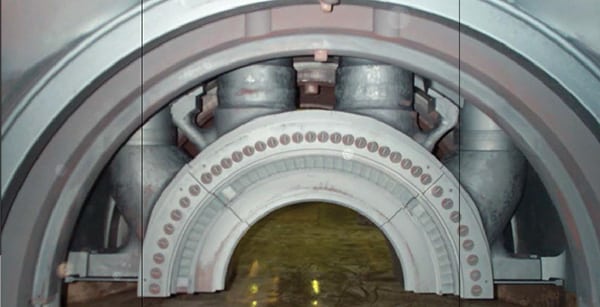 |
| 2. New iron. Upgrading turbine components, such as the high-pressure turbine control section shown here, is one way of improving heat rate. Courtesy: EPRI |
Maintenance Projects
The report also listed 25 maintenance projects and practices. For each, the spreadsheets identified estimated initial maintenance cost, additional O&M costs per year, heat rate reduction (percentage and Btu/kWh), estimated auxiliary load benefit, capacity increase, EFOR improvement benefit, heat rate benefit, emissions benefit, added power sales benefits, maintenance annual benefit-cost ratio, useful life, and payback (years).
Example projects included replacing feed pump turbine steam seals, repairing steam and water leaks, boiler chemical cleaning, repairing boiler air in-leakage, cleaning air preheater coils, repairing condensate pumps, and repairing FGD systems. The results likewise represented a wide range. Heat rate reductions ranged from 0.03% to 1.50%. Maintenance annual benefit-cost ratios ranged from about 1 to over 100. ( POWER has published several articles on many of these capital and maintenance projects.)
Areas for Improvement
This section of EPRI’s Range and Applicability of Heat Rate Improvements report described issues and perspectives on improving power plant heat rate—including recovering plant efficiency lost during flexible operation, implementing a cycle alignment program, employing remote monitoring, making physical upgrades to steam turbine generators, designing and implementing a heat rate improvement program, and improving the effectiveness of steam turbine performance engineers. The values of heat rate improvements stated for each of these projects may not be additive, as some overlap could exist and each of these projects were focused on the results of site-specific actions.
Flexible Operation
Flexible operation refers to the ability of a plant to operate at part load and in load-following and cycling (on and off) modes, in response to economic conditions and increased utilization of non-coal-based generation (such as renewables and gas). Operating conditions under flexible operation can result in reductions in plant efficiency and increased degradation and maintenance requirements on components due to constant swings in operating temperature and pressure (Figure 3).
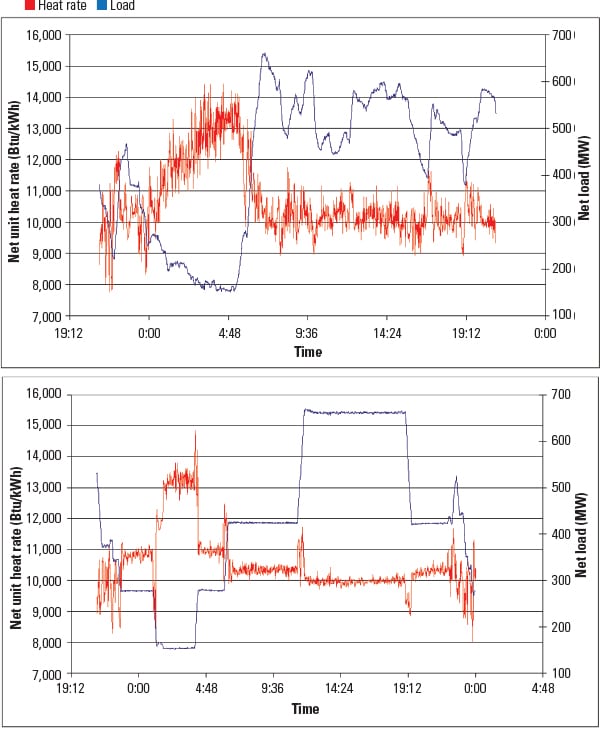 |
| 3. Wide range. Unit load, and changes in it, have a large effect on a plant’s heat rate. The average plant achieves the lowest heat rate at full-power, steady-state operation. Courtesy: EPRI |
A 2010 EPRI study (report 1021205) identified cost-effective capital modifications and adjustments to plant operating procedures to improve heat rate during cycling operation. The study identified 10 upgrade options, though the practicality of each is site-dependent:
■ Sliding-pressure operation. With sliding-pressure operation, plant efficiency is increased by reducing turbine-throttling losses. This option was further analyzed in a follow-up project and found to provide a heat rate improvement at part load in the range of 2%.
■ Variable-speed drives for main cycle and auxiliary equipment. Variable-speed drives reduce auxiliary power consumption of rotating equipment, thus increasing plant net output. The amount of savings available with variable-speed operation can vary widely. Variable-speed drives are expensive and can be difficult to justify for older plants with limited remaining life.
■ Boiler draft system control schemes and operating philosophy. Where multiple fans are operating in parallel, plant efficiency at low loads and under ramping conditions can be maintained and improved by the proper selection of startup/shutdown procedures. Depending on the load scenario, this measure will allow auxiliary load reductions by operating fewer fans, but it can increase maintenance and reliability risks.
■ Automated pulverizer supervisory controls and variations with mill design. Firing systems and operating procedures can be optimized for each load level. The goal is to operate the least number of pulverizers to maintain stable coal-only flames while following load.
■ Optimum partial-load operation of air quality control systems. For a wet FGD application, the number of operating recycle pumps can be reduced with load reductions, resulting in reduced plant parasitic loads. With ESPs, once the unit load has stabilized at the lower load, it may be possible to reduce ESP power consumption by turning off specific electrical fields while maintaining opacity and particulate emission rates at the regulated levels.
■ Feedwater heater drain system modifications for cycling. Typically, cycling efficiency losses occur at low loads when heater drains are routed to the condenser as opposed to the deaerator. Plant efficiency at part load will be improved by ensuring that drains are directed to their proper destination, when possible.
■ Cooling system optimization. Where multiple cooling water pumps and cooling tower fans are operated in parallel, proper selection of component startup/shutdown schemes (dependent on the load scenarios and ambient conditions) will allow auxiliary power reduction by removing pumps and fans from service, but this can increase maintenance and reliability risks.
■ Performance monitoring. Several tools are available to display relevant parameters with respect to plant efficiency at various loads. These tools can be optimized to enable operators to prioritize corrective actions, thereby improving cycling efficiency.
■ Reducing warm-up flow for idle boiler feed pumps. Heat rate improvement can be achieved by reducing warm-up water flow rates from operating pumps to idle pumps. Less warm-up water flow will reduce the auxiliary power of the operating pumps.
■ Minimizing flow, pressure, and temperature oscillations during cycling operation. Some oscillations of temperature, pressure, and flow typically occur when plants are operating at steady-state loads, but they can be amplified during cyclic operation and result in a reduction in plant efficiency. Commercially available optimizers contain a forward-looking feature that minimizes the time that steam temperature strays from design, reducing attemperation spray flow and the heat rate effect of load following.
Cycle Alignment
Cycle alignment, also known as cycle isolation, refers to the alignment of the cycle by isolating all, or as much as possible, of the high-energy fluid leakage from the steam cycle (Figure 4). Certain leaking valves will cause a direct loss in generation or an increase in fuel costs.
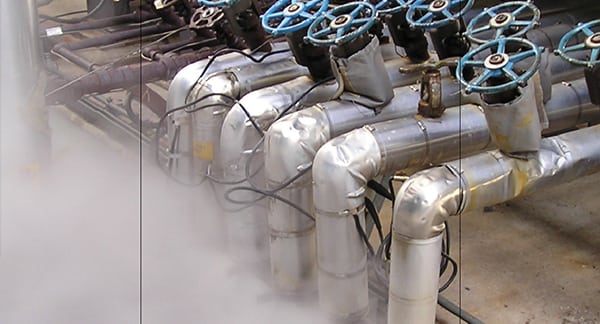 |
| 4. Leaking money into the air. Leaks from the steam cycle, like the valves leaking into a header shown here, can have a direct impact on heat rate. Courtesy: EPRI |
When used as part of an overall plant performance improvement program, cycle alignment programs have provided large gains at low costs. Implementing a cycle alignment program can jump-start a plant performance program and result in substantial heat rate improvements that lead to fuel cost savings and emissions reductions. With improved cycle alignment, heat rate improvements in the range of 50 Btu/kWh—about 0.5%—are common. Units with problematic valves or no history of maintaining cycle alignment may experience a large one-time heat rate improvement upon this program’s implementation.
Various methods have been used to ensure proper cycle alignment, but an application’s success and costs vary depending upon the specific valves and unit designs involved. In 2011, an EPRI project assessed cycle alignment activities and identified their costs and benefits. The study (report 1024640) identified methods in use in the field to estimate or determine the leakage rate through leaking valves and used several real-life examples from operating power plants to illustrate how cycle alignment programs have been implemented.
Remote Monitoring Centers
Remote monitoring centers (RMCs) have been used for many years to track and improve equipment reliability, and in many cases, these same RMCs have thermal performance software installed for monitoring heat rate (Figure 5). The value of finding and fixing reliability issues can often be quantified, but placing a value on heat rate monitoring is not so easy.
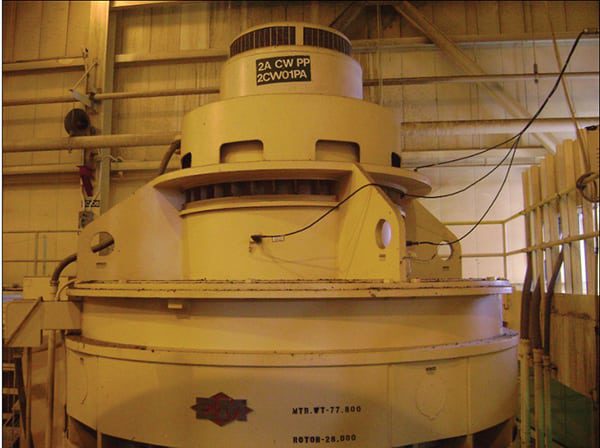 |
| 5. Eyes on the prize. Remote monitoring of key plant equipment can help locate and assess negative impacts on heat rate. Courtesy: EPRI |
In 2011, an EPRI study (report 1023075) evaluated the use of remote monitoring systems and personnel as it relates specifically to heat rate improvement. The project team visited RMCs at three power generating companies. The main priority of these RMCs was to improve reliability, but they also monitored for heat rate improvement to varying degrees.
All of the companies visited were able to verify heat rate improvements based on the activities of the monitoring centers in addition to improvement in equipment reliability. In many cases, the heat rate improvements were significant and well surpassed the incremental costs for monitoring heat rate in addition to reliability. Heat rate improvements in the range of 2.5% to 4% have been reportedly attributed to the actions resulting from these RMCs. Key takeaways from these and other site studies will be discussed in Part 2 of this series.
Steam Turbine Steam Path Modifications
Over the past 20 years, an increased number of nuclear and fossil power plants have undertaken modifications to increase power ratings and improve heat rates of selected units. Many of these actions have resulted from physical upgrades to steam turbine generators, as well as enhancements to auxiliary components.
EPRI conducted a survey to compile current results of performance upgrades to produce a single technical report summarizing the findings (report 1018346). Commonly reported heat rate improvements attributed to turbine modifications were in the range of 2% to 4%. However, these modifications were capital intensive and large consumers of time and resources, had a finite life, and were not always 100% successful.
Heat Rate Improvement Program Guidelines
Power plant facilities with performance or heat rate–improvement programs perform better than those that do not have such programs. A heat rate–improvement program typically provides sufficient information for decision making with respect to timely maintenance actions, operational adjustments, and physical modifications.
Accurately monitoring the performance of any power plant component includes the trending of parameters that also describe the performance of other plant components, providing insight and information on improving their operation as a whole. A performance program creates a culture centered on improving plant performance. The sharing of performance data with the entire plant staff strengthens their understanding of how each individual may contribute, ultimately making heat rate improvement a team effort.
A 1983 utility survey covering 129 fossil generation units concluded that a mean heat rate improvement of more than 4% could be achieved at existing power plants by implementing an effective heat rate–improvement program.
A 2012 EPRI project sought to provide a single-source document on heat rate improvement that could be used for both training and application. The project produced the Heat Rate Improvement Program Guidelines (1023913). The guidelines incorporated information from earlier editions of programmatic documents and produced a new report organized to facilitate the ability of a site performance engineer to justify, design, implement, and manage a new heat rate–improvement program.
Steam Turbine Performance Engineer’s Guide
The steam turbine is the workhorse of most power plants. Its performance and reliability relate directly to the performance and reliability of the power plant that it serves. The actions of the turbine performance engineer are crucial to its high level of performance. However, in many cases, that engineer is assigned many other duties or is an early-career engineer placed into this position without previous experience.
The primary role of a steam turbine performance engineer is to improve and maintain the efficiency and power output of the steam turbine cycle. One of the measurements of success is improved turbine heat rate. In 2010, EPRI published the Steam Turbine Performance Engineer’s Guide (1019657), which describes the functions and responsibilities of a steam turbine performance engineer. The instructions and recommendations in this guide, when properly executed, will improve the effectiveness of steam turbine performance engineers, positively affecting both the performance and reliability of the steam turbines under their care. No specific heat rate improvement value was attributed to the role of a steam turbine performance engineer.
From Data to Action
With all this data in hand, many of our members questioned how much of a heat rate improvement is actually achievable, so we embarked on the multi-year study mentioned earlier. Common themes and takeaways from that project, and next steps in heat rate research and development, are the subject of Part 2 of this series. ■
— Sam Korellis is a principal technical leader in the Combustion Performance and Emissions Control R&D group at EPRI.